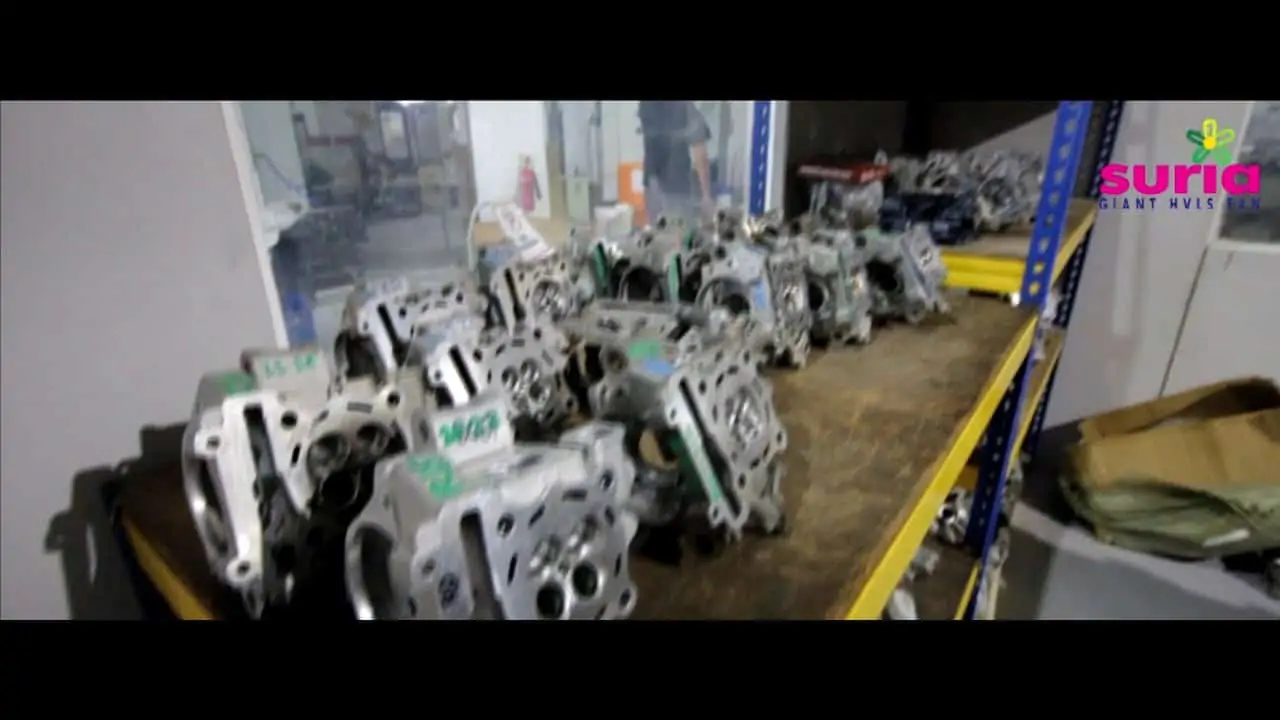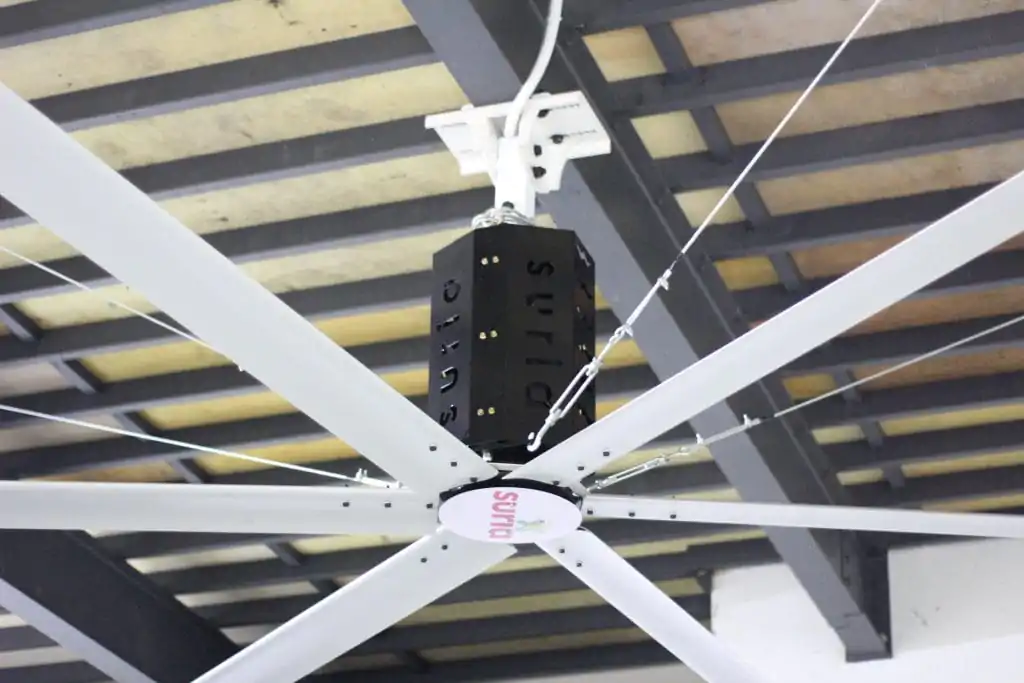https://suriagiantfan.com/wp-content/uploads/2024/05/IMG_1803.mov The largest and grandest mosque in the state of Terengganu is the Taman Ilmu…

WHAT IS THE DIFFERENCE BETWEEN LARGE AND SMALL CEILING FANS?
Many people ask about the difference between giant ceiling fans and small ceiling fans. You might have seen a giant ceiling fan in large spaces such as restaurants, malls, warehouses, cafeterias, mosque etc. All these giant fans are suitable for a big area. In contrast, small ceiling fans are very common, they are present in almost every home. But the main question is whether they are the same or not. Some people think that giant ceiling fans and small ceiling fans are almost the same. So, we are going to discuss the differences between them to clear all confusion. Let’s start the discussion.
WORKING SPEED
The most important difference between small ceiling fans and giant ceiling fans is speed. You might think that giant ceiling fans might run at high speed. But it is not true. Usually, these giant fans run at a very low speed. The common RPM of giant fans is in the range of 50-100 RPMs depending on the size and type of fan. In contrast, small fans run at a very high speed as compared to giant fans. They can run 4-8 times faster. The rpm range of small fans is 300-400 rpm. Now you can imagine, how fast the small fans rotate.
Both types of fans differ in their rpm. If you are thinking that rpm or speed is the only factor that makes a fan better, then you are wrong. There are more factors such as size, airflow, aerodynamic design, and other things that determine the performance of a fan.
AIRFLOW
The power consumption of most small fans is around 75 watts. While large industrial ceiling fans consume around 1500 watts. Hence, a giant ceiling fan consumes nearly 20 times of a simple fan. In the same energy consumption, you can have 20 small fans. But, the area that one giant fan covers cannot be covered by dozens of small fans. An industrial ceiling fan can cover an area in the range of 630-2,000 square meters depending on the size of the fan. In contrast, a small ceiling fan can cover an area around 13-25 square meters or a little more.
NO. OF FAN BLADES
The number of blades in a typical residential ceiling fan is 3 fan blades or 8. The most common type of residential ceiling fan has three blades. While the giant fans have 5-6 blades. Suria Giant Fan all industrial and commercial ceiling fans have 5 blades. This 5-blade design provides maximum performance and life span. Due to a greater number of blades and wide diameter, giant ceiling fans can provide excellent airflow at low speed. This is the reason that HVLS fans get a name of “high volume low speed”.
DIMENSION & SIZE
The typical residential ceiling fan is 3-4 feet long in diameter. Such type of fan is enough for a room around 144 sq. feet or a little more. It can easily be hooked to the ceiling without any hassle. You will only need some help from a person to hang it. In comparison, giant ceiling fans are nearly 4-6 times larger than the diameter of small fans. You can easily find a giant HVLS ceiling fan in the range of 8ft,12ft, 16ft, 22ft, 24ft (3.7m~7.3m). Large industrial and commercial ceiling fans can take a huge space easily.
Since giant fans are a way greater than small fans in diameter; therefore, they cover a very large area. They are usually placed in an open space where you need to ventilate a wide area. Due to such great size, they are quite heavy as well. Thus, they require special joints and support on the ceiling.

Now you can understand that you will need many small fans to cover a huge area. You might need around a hundred fans. If you install small fans instead of a giant fan, then the total wattage of these fans will be much greater than a single giant fan. Therefore, for a large area, a giant ceiling fan is better and economical.
Indeed, both giant and small ceiling fans are excellent for the purpose they are designed for. Giant fans are economical for a large area as they provide high airflow and cover a large area. But they take a huge space. On the other hand, small ceiling fans are excellent for home use and small areas. They have excellent airflow and low power consumption that is suitable for a small area.




